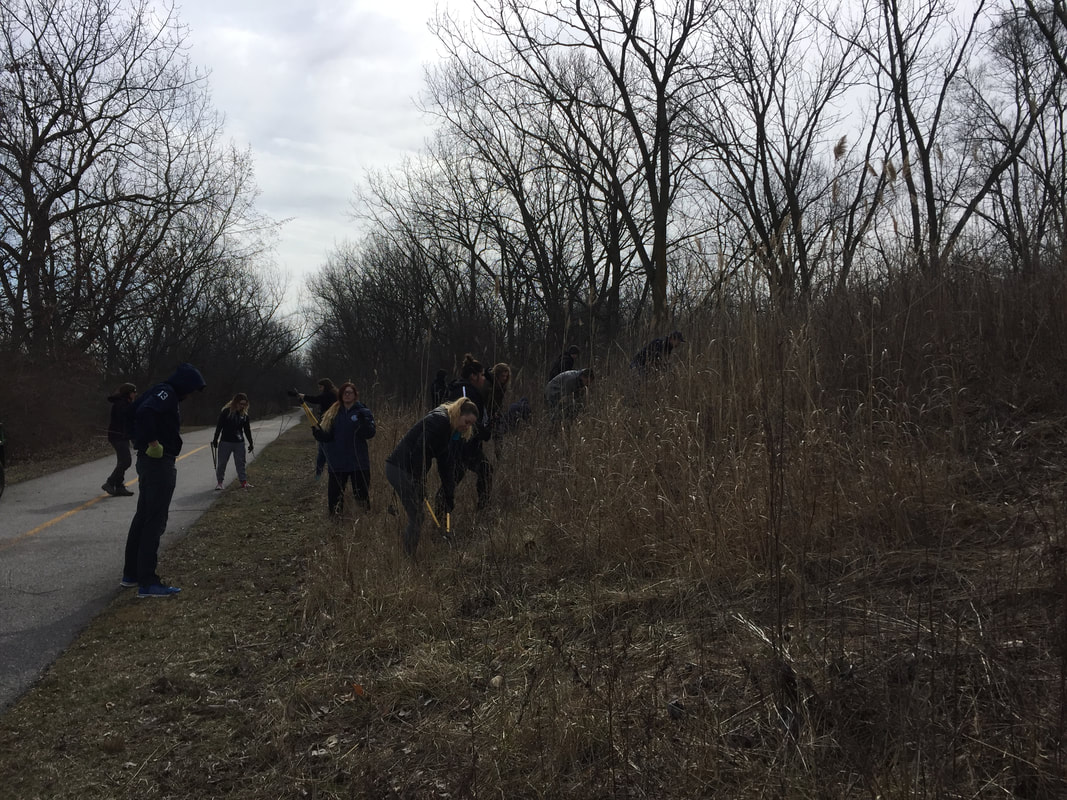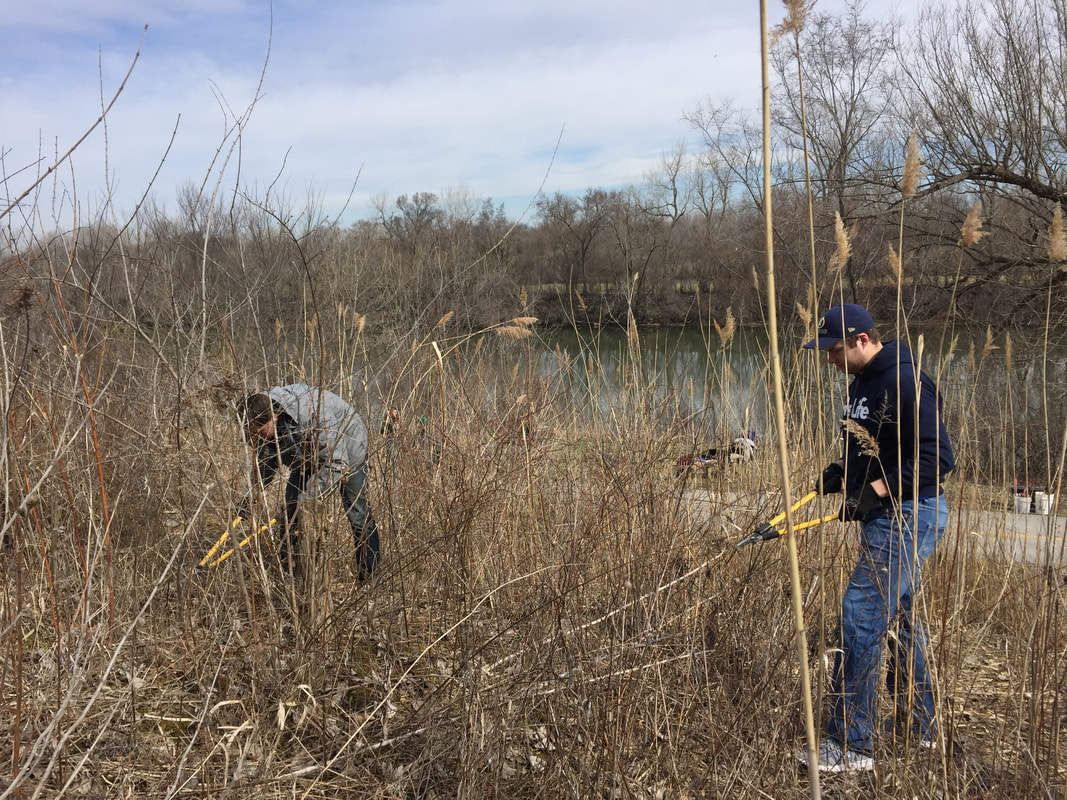|
Enjoy this guest post from Mariah Neleson, a student in my Biology 100 class this semester. With the cold weather this April, we weren't sure what weather conditions we'd have for our work day at Lake Katherine, but nevertheless, we headed out to engage in hands-on stewardship. I heard the birds chirping, felt the sun shining, and sensed the excitement. Our Biology 100 lab class finally got to take a walk and be in the nature we have been talking about and studying. In anticipation we brought raincoats and work shoes, not quite sure what we were getting ourselves into. We took the 7 minute walk down the street of Trinity’s campus and into the nature reserve (Lake Katherine) parallel to the busy street named College Drive. We were soon on a paved path under the shining sun awaiting instruction for the next few hours. After a short introduction, we all grabbed some work tools and went to work on the prairie looking hill alongside of us. Lake Katherine is a nature preserve and botanical gardens located in the Southwest suburbs of Chicago. It was established to provide opportunities for education for everyone to have a place to connect with nature. It also gave opportunities for the environment to grow and flourish without being destroyed with the growth of business and economy. With the establishment of the nature preserve, natural species had the opportunity to grow and develop and be preserved. However, with natural growth, there were also ample opportunities for invasive species such as buckthorn to grow and develop. Buckthorn is a plant that originated in Asia and Europe and was brought over to North America at some point in time. Now it has been named an invasive species because it steals nutrients and sunlight from native species that are healthy and beneficial to the environment. Our job on April 5 was to clear out the buckthorn from the prairie hill. We also came across other invasive species such as honeysuckle. Throughout the workday, as I worked under the sun and alongside of peers, surrounded by the beauty of creation, I was reminded of the goodness of God. In the beginning of the creation of the world, God put human beings on the earth to care for it and be stewards. With the fall came the brokenness of human beings and the sins that come with it. We have destroyed and polluted creation with our own selfish ambitions. Being back in nature reminded me of the call that was put on us in the beginning and the continuation of that call in our own lives today. To care for and restore creation and to partner with God to be shalom bringers. By spending a few hours on a Thursday afternoon clearing out a species that has invaded and taken over, I got to join in God’s redemption plan for creation: that everything will be restored in perfection and glory when Jesus comes again. Mariah Neleson
0 Comments
|
Abbie SchrotenboerI'm a biology professor at Trinity Christian College. I'll be using this page to share interesting stories related to ecology and conservation at Trinity and in the Chicago area (although I might be tempted to expand my geographic focus upon occasion). Archives
December 2020
Categories |


 RSS Feed
RSS Feed
